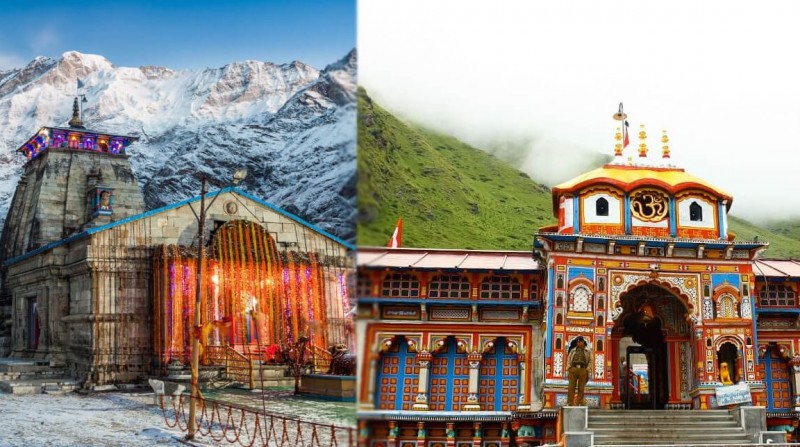
The Skanda Purana, an ancient Hindu scripture believed to have been written over five thousand years ago, contains prophecies regarding significant events in Uttarakhand, India. According to this scripture, during the initial phase of Kali Yuga, a time characterized by increasing sinfulness and diminishing trust among people, the Nar and Narayan mountains in Uttarakhand will come together. This merging is said to block the traditional pilgrimage routes leading to the sacred sites of Badrinath and Kedarnath, rendering them inaccessible.
The Skanda Purana emphasizes the unparalleled sanctity of Badrinath, stating, "There are many sacred places on the divine land of Rasatal, but there has been and will be no pilgrimage like Badri." This prophecy foretells that as Kali Yuga progresses, signs will emerge indicating the eventual disappearance or inaccessibility of these revered pilgrimage destinations.
According to the texts, one such precursor to these events is the separation of the hands of the deity Lord Narsimha in Joshi Math. This separation, as described by Sanjay Dimri, the priest of the Narsimha temple, signifies a significant change. It is believed that this event marks the eventual departure of Lord Badri from his current abode, with future worship centered approximately 22 kilometers away from the existing temple.
Recent research also suggests a reduction in the distance between the Nar and Narayan mountains over the past few years. This geographical shift is accompanied by a series of natural disasters plaguing Uttarakhand. In recent memory, Joshi Math experienced land subsidence, causing structural damage, including cracks in the walls of the revered Narsimha temple. Prior to this, Kedarnath faced catastrophic flooding due to the rupture of a glacier in Kedarghati, an event interpreted by some geoscientists as a harbinger of impending calamity.
The Skanda Purana and Vishnu Purana both accord special significance to Kedarnath and Badrinath. Kedarnath Dham is described as a place of repose for Lord Shiva, while Badrinath Dham is revered as one of the eight Vaikunthas, where Lord Narayan alternates between six months of rest and six months of cosmic administration.
During Satyuga, the Skanda Purana recounts, Lord Narayan granted direct visions to common people alongside deities and sages. As Tretayuga commenced, however, this practice was curtailed, restricting direct sightings to deities and sages alone. By the advent of Dwapara Yuga, Lord Narayan had withdrawn entirely from direct interactions, and an idol was consecrated in his place at Badrinath. Since then, pilgrims have revered this idol, receiving blessings from its divine presence.
A poignant symbol of the changing times is the gradual thinning of the fingers of the Narsimha deity's idol in Joshi Math, which now resemble the tip of a needle. Devotees who undertake the annual pilgrimage to Joshi Math and Badrinath have observed this transformation and regard it as a profound sign. According to mythological beliefs, this event foreshadows the potential merging of the Nar and Narayan mountains, ultimately closing the path to these sacred sites.
In conclusion, the prophecies outlined in the Skanda Purana serve as a spiritual compass, guiding believers through the tumultuous epochs of human existence. They offer profound insights into the cyclical nature of time, the sanctity of sacred spaces, and the inevitable transitions that mark the passage of ages in Hindu cosmology.
When People Start Doing Such Things, Understand That the End of Kali Yuga Has Come
Who was the first human born on Earth and how did their birth occur?